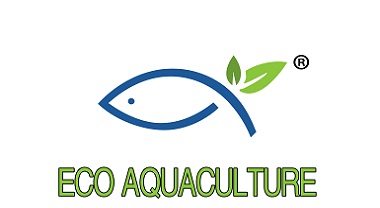WWTP Aeration Gamer Changer
WWTP Aeration Gamer Changer
Ecowater began the wastewater treatment market in 2008 and moved into the aquaculture sector seven years later. With fifteen years of expertise in water-related industries, Ecowater's main concepts have constantly focus on FILTRATION & AERATION. Ecowater has created a slew of new categories and technologies in the areas of water quality, aeration, and energy efficiency. We are always looking for ecologically beneficial solutions to cohabit with water, the world's most important resource, as the company's name says.



Following extensive study, it was revealed that whether in wastewater treatment or aquaculture, the aeration process is regarded as a critical phase. Aeration, as the process's heart, is critical to guaranteeing operational efficiency and ecological health. The importance of oxygen has grown in importance, particularly in wastewater treatment.
In wastewater treatment, oxygen plays several important roles. It primarily works as a driving factor in the microbial breakdown of organic molecules, supplying bacteria with the oxidants needed to break down organic chemicals into less hazardous metabolites. Furthermore, oxygen is the building block for microbial metabolism and development, ensuring the health and activity of microbial communities. Oxygen is also important in the oxidation of ammonia nitrogen, which converts it to nitrate nitrogen and so has a lower environmental impact.
When addressing the importance of aeration, it's important to remember that it's not only about delivering oxygen; it's also about the beneficial chain reactions it causes. Aeration brings gas into the system, causing liquid movement, mixing, and suspension, preventing sludge formation and preserving system homogeneity. Aeration is also useful in reducing odor-related difficulties by controlling the production of hazardous gases. Furthermore, by strengthening the gas-liquid interface, aeration can improve gas transfer efficiency, speeding organic matter decomposition and thereby boosting treatment efficiency.



In light of this setting, we'll look at the many sorts of aerators. Different aeration systems have distinct benefits when it comes to satisfying the demands of wastewater treatment and aquaculture. Each technology, from classic bubble aeration to modern membrane and rotary aerators, has its own set of situations and efficiency characteristics. Join us as we investigate these various aerator types and see how they provide innovation and greater performance to these critical sectors.
Let's have a look at some Ecowater aerators today!
 Membrane Aerator:
Membrane Aerator:
The membrane aerator is a gas-liquid transfer device that transfers gas into liquid via a thin or microporous membrane, creating small bubbles and releasing gas into the liquid. The membrane aerator's main benefit is its capacity to create homogeneous, tiny bubbles, which increases the gas-liquid contact area and improves gas transfer efficiency. This device is often employed in gas transfer applications such as biological treatment operations, degassing, and oxidation reactions. Bubble size and dispersion are influenced by the membrane material and pore size.
 Rotary Aerator:
Rotary Aerator:
The rotary aerator introduces gas through the rotating flow of liquid, creating turbulence and vortices that distribute the gas into microscopic bubbles. This aerator excels in gas-liquid mixing and liquid agitation. Rotary aerators are extensively used in aquaculture, aquariums, and some industrial operations to give oxygen, circulate water, and suspended particulates.
They can differ significantly in terms of material:
EPDM membranes and ABS housings are the major components of the Membrane Aerator. These factors work together to give excellent resistance to chemical corrosion, aging, and ripping. Depending on the kind of wastewater, silicone membranes, and a higher-grade stainless steel casing are also available.
The Rotary Aerator is made of a composite material that includes PA66 nylon reinforced with 30% glass fiber. PA66 nylon has high strength, wear resistance, heat resistance, and chemical corrosion resistance. This makes it excellent for the wastewater business, and we also provide a stainless steel rotary aerator.
Their working principles and advantages also vary:
Membrane Aerator: By injecting gas into the liquid, the membrane aerator raises the oxygen content. Gas enters the liquid through the membrane and is subsequently discharged from the membrane's surface into the liquid. This approach effectively disperses gas into tiny bubbles and creates a larger gas-liquid contact area, hence facilitating gas transmission. Because of the membrane, gas may be spread more uniformly into the liquid, resulting in smaller and more stable bubbles.

Keywords: Small bubbles, Stability
The rotary aerator delivers gas by using the creation of vortices and turbulence in the liquid. By injecting gas, the device causes internal whirling or turbulence, which disperses the gas into tiny bubbles and keeps them moving inside the liquid, facilitating gas transmission.

Keywords: Vortices, agitation
So, which of these two aerators with diverse materials, designs, and effects is superior? A bar chart comparing data from a nine-inch membrane aerator with a rotary aerator is shown below.

According to the statistics, the performance of the rotary aerator outperforms that of the membrane aerator in several ways. This is because of its design, which makes greater use of the airflow from the Roots blower and has very low air resistance. As a result, it greatly outperforms the membrane aerator in terms of aeration capacity. Furthermore, there are no risky components in the rotary aerator, and its design can sustain high-pressure use for up to 15 years. In the case of membrane aerators, on the other hand, the membranes gradually lose their flexibility over time, needing replacement every three years.
This raises another critical issue for wastewater treatment plants: how to keep these systems in good working order. Replacing any component in a wastewater treatment plant is a difficult undertaking since it necessitates shutting down the facility to safeguard the safety of maintenance staff.
 The maintenance of membrane aerators has been a worldwide concern. Most wastewater treatment plants find it difficult to replace broken membrane aerators because they cannot discharge the sewage from the tanks. In a wastewater treatment facility with possibly hundreds of units, the timing of membrane aerator failures is unpredictable. As a result, replacement and maintenance have become major issues. The rotary aerator efficiently tackles this issue by providing not just endurance through its materials and design, but also a more user-friendly installation procedure. The rotary aerator is mounted through the use of a suspended ceiling, allowing each rotary aerator to be taken out of the treatment tank through a stainless steel air delivery line. This improves maintenance efficiency and decreases difficulties.
The maintenance of membrane aerators has been a worldwide concern. Most wastewater treatment plants find it difficult to replace broken membrane aerators because they cannot discharge the sewage from the tanks. In a wastewater treatment facility with possibly hundreds of units, the timing of membrane aerator failures is unpredictable. As a result, replacement and maintenance have become major issues. The rotary aerator efficiently tackles this issue by providing not just endurance through its materials and design, but also a more user-friendly installation procedure. The rotary aerator is mounted through the use of a suspended ceiling, allowing each rotary aerator to be taken out of the treatment tank through a stainless steel air delivery line. This improves maintenance efficiency and decreases difficulties.
What about the aerator with a membrane? Because of its tiny and thick bubbles, as well as its endurance, it is still a fundamental instrument in the industry. There's no doubting that the membrane aerator has played an important role in our journey throughout the years.
Many professional clients have begun to experiment with the rotary aerator since it was introduced by Ecowater. Meanwhile, Ecowater is actively investigating and summarizing the various benefits and techniques of employing this rotating aerator.Ecowater's mission is to advance with the industry, sharing superior technologies with clients and making the planet a better place for everybody.




